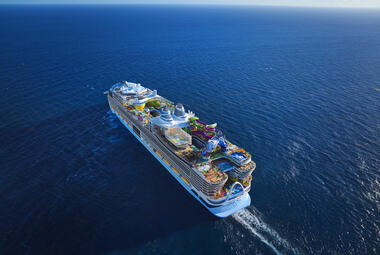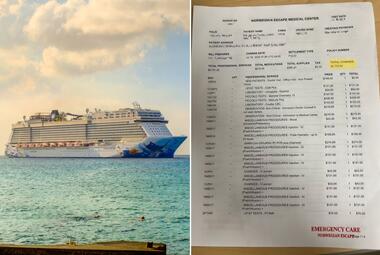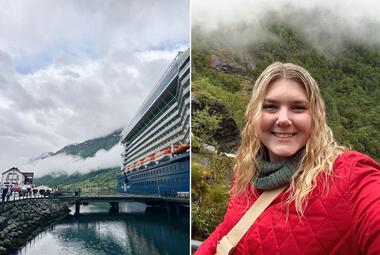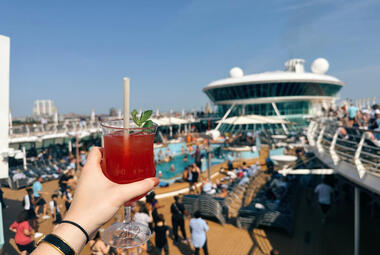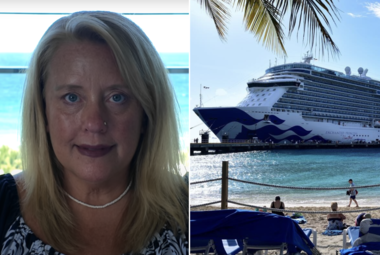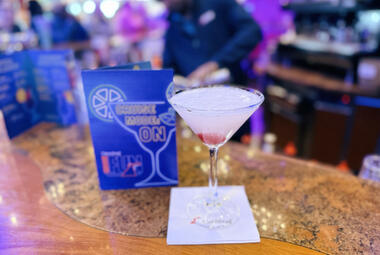The sinking of the Titanic is one of the most well-known maritime disasters in history. When launched in 1912, she was the world's largest cruise ship; however, she did not hold that record for long.
While en route to New York on her inaugural voyage, she struck an iceberg that damaged the hull of the ship, causing the deaths of over 1,500 people as the vessel sank beneath the freezing cold waters of the Atlantic.
But just how much did the passengers pay to be on this ill-fated voyage? Nowadays, it's not uncommon to find cruise fares for interior rooms for less than $500 per person. Of course, accommodations on the infamous Titanic were different than cruise cabins today.
Note that the hero photo was taken from Wikipedia on December 7, 2023. It was originally uploaded by user Deigus15, with the current version having been uploaded by Pygoscelis antarcticus in June 2023, {{PD-US}}.
Read more: The "unsinkable" Titanic compared to a cruise ship today (2024)
How much was a first-class ticket on the Titanic?

Suites on cruise ships today vary in pricing. The same was true for Titanic's first class. Some first-class passengers paid around £30 for a standard berth, whereas others paid as much as £870 for luxury suites.
While that might not seem like a lot, when adjusted for inflation, this meant the lowest first-class ticket was approximately £3,600, with the most expensive going for £105,000. This is over $130,000 USD!
What were first-class accommodations like onboard Titanic?
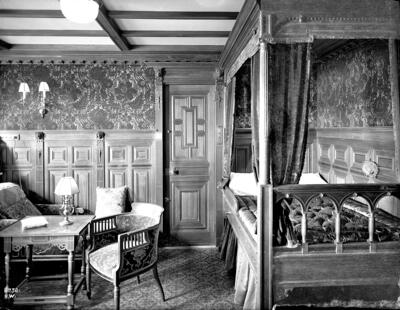
(Photo retrieved from Wikipedia on December 7, 2023. Current version uploaded by user Stv26. Original version uploaded by user Deigus15, {{PD-US}})
First-class rooms onboard Titanic were the most luxurious on the ship. Each class — first, second, and third — had their own dedicated public areas, too.
These included a private dining room and saloon, reading and writing room, smoking room, heated swimming pool, barber shop, and Turkish Baths.
While most people equate suites on today's cruise ships with expansive balconies, there was not a single first-class suite with a private verandah.

That, however, doesn't mean that they compromised on space. The largest cabins onboard Titanic were comprised of two bedrooms, an ensuite bathroom, and a separate parlor room.
As is with cruising today, food was a major component of the first-class experience, with some meals taking as long as four or five hours!
While they didn't know it at the time, the final meal for roughly 40% of Titanic's first-class passengers consisted of varied hors d'oeuvres such as oysters, consommé olga, and salmon with mousseline sauce and cucumber.
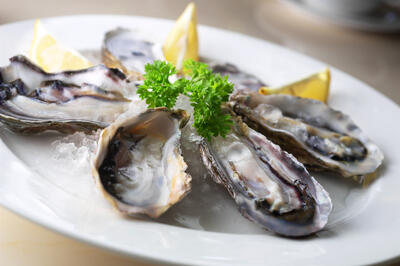
Main dishes included filet mignon, sauté of chicken lyonnaise, lamb with meat sauce, roast duckling, and beef sirloin with chateau potatoes. They were also served green peas and creamed carrots, boiled rice, and Parmentier and broiled potatoes.
All guests were then given punch romaine, a citrusy cocktail that's meant to be a palate cleanser. This was followed by roast squab, cold asparagus, foie gras, and celery.
The final first-class dessert on Titanic was Waldorf pudding, peaches in chartreuse jelly, chocolate and vanilla eclairs, and French ice cream.
Who was the richest passenger on the Titanic?
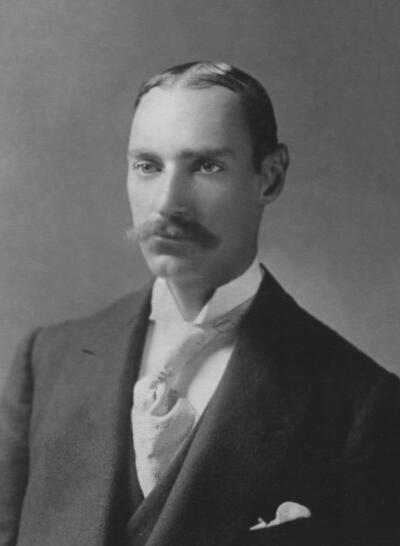
(Photo retrieved from Wikipedia on December 7, 2023. Originally uploaded by user Materialscientist, {{PD-US-expired}})
John Jacob Astor IV was an American businessman who, when he boarded the Titanic, had a net worth of around $87 million. Today, this is nearly $2.6 billion! Despite being the wealthiest man onboard, he perished in the sinking.
How much was a second-class ticket on the Titanic?
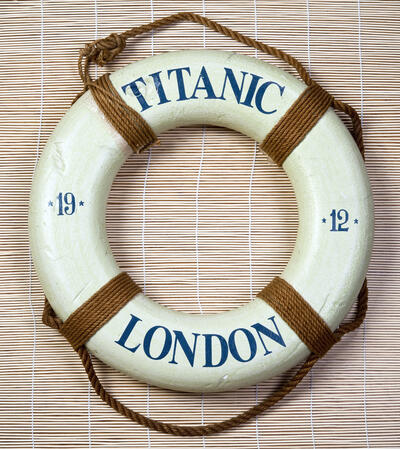
While still not cheap by today's standards, a second-class ticket cost £12 in 1912, which equates to roughly $1,830 today.
In November 2023, I boarded a 5-night cruise onboard Carnival Vista in a Junior Suite that cost $1,800 per person! I can't imagine paying the same to share a restroom with a bunch of strangers.
If you're trying to figure out what $1,800 can get you on a cruise today, here are some options:
🚢 A 7-night cruise onboard the brand-new Icon of the Seas departing on September 6, 2025 in an ocean view cabin ($1,799 per person)
🚢 A 7-night cruise onboard the brand-new Carnival Jubilee departing on January 18, 2025 in an Ocean Suite ($1,599 per person)
🚢 A 4-night cruise onboard Disney Wish departing on January 27, 2025 to their brand-new, private destination Lighthouse Point and Castaway Cay in an ocean view cabin ($1,489 per person)
What were second-class accommodations like onboard Titanic?
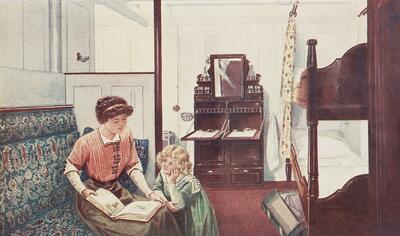
(Photo retrieved from Wikipedia on December 7, 2023. Current version uploaded by user Antonynizh. Original version uploaded by user HefePine23, {{PD-US-expired}})
Whereas some first-class cabins had their own ensuite bathrooms, all second-class passengers shared communal facilities. Additionally, some second-class cabins were considered alternate first-class rooms.
To be multi-functional staterooms, they were furnished and equipped for second-class guests; however, they had a few features that couldn't be found in other second-class rooms, including carpeted floors and heaters.
Second-class passengers had their own private public areas, too. These included a barber shop, smoking room, outdoor promenade, and dining room.
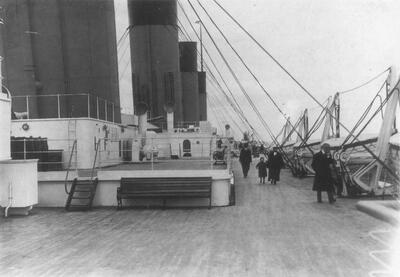
(Photo retrieved from Wikipedia on December 7, 2023. Current version uploaded by user Mackavi, {{PD-US}})
The second-class menu tended to be more classic and serve traditional British, while the first-class menu highlighted elegant French dishes.
The last meal served to those in second class consisted of consommé tapioca, baked haddock, curried chicken and rice, spring lamb with mint sauce, roast turkey with cranberry sauce, green peas, puréed turnips, boiled rice, roast and boiled potatoes, plum pudding, wine jelly, American ice cream, assorted nuts, fresh fruit, cheese, and biscuits.
How much was a third-class ticket on the Titanic?
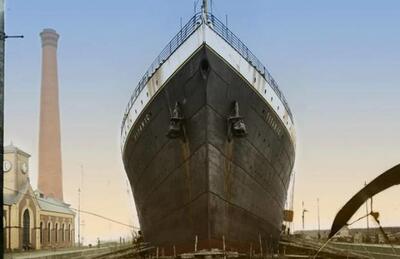
The cheapest way to sail onboard the Titanic was in third class. In 1912, a ticket could be purchased for just £7, which was about $35 USD back then. When accounted for inflation, this means that third-class passengers paid roughly $1,070.
While given the least amount of space onboard, Titanic's third-class accommodations were considered some of the best at the time
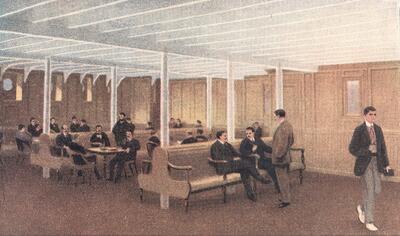
(Photo retrieved from Wikipedia on December 7, 2023. Current version uploaded by user HefePine23, {{PD-US}})
Third-class cabins were located on the lowest decks of the ship. Plus, they were subject to feeling most of the ship's vibrations.
Their cabins were much more modest than those of the two higher classes. In fact, there were only 84 two-berth cabins for third-class guests. The majority of the third class was comprised of four- and six-berth rooms. It wasn't uncommon to share a room with strangers, either.
While third-class had their own public spaces, they had the fewest compared to first- and second-class. They did, however, have their own outdoor spaces located on the poop and aft decks.
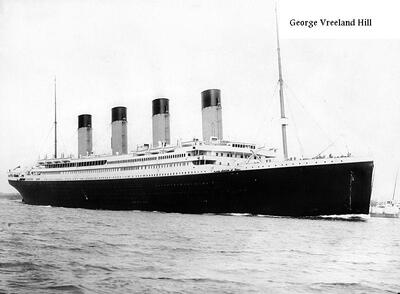
As expected, one of their public rooms was the dining room. Their menu was the most simple, with the final dinner consisting of rice soup, bread, biscuits, roast beef with brown gravy, sweet corn, boiled potatoes, plum pudding, and fruit.
On cruise ships today, all passengers eat in the same dining room, with the exception of suite guests who can sometimes dine in a suite-only dining room with upgraded offerings.
How much did it cost to sail onboard the one and only Titanic voyage?
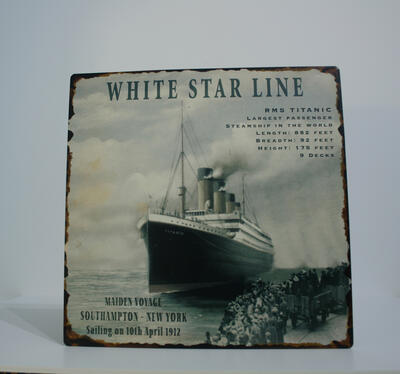
If you were wealthy, you could splurge on a lavish suite for what would cost about $130,000 today. Of course, not everyone had enough cash for this.
At £12, or $1,830 today, second-class accommodations were still pretty pricey.
For those desperate enough to sail to America, a third-class ticket was the most reasonably priced option. Even though a third-class berth cost as little as £7, many passengers had to save up for months. When adjusted for inflation, the cheapest Titanic ticket was still over $1,000.
In all honestly, these prices are pretty similar to what it costs to take a cruise today. While you still find deals for cheaper sailings, it isn't surprising for many to pay, at minimum, $1,000 per person, especially for longer sailings on the newest ships in balcony cabins.
Even if you pay $500 for your cruise fare, you can easily tack on another $500 in cruise add-ons, such as drink and internet packages, shore excursions, specialty dining, and more.




